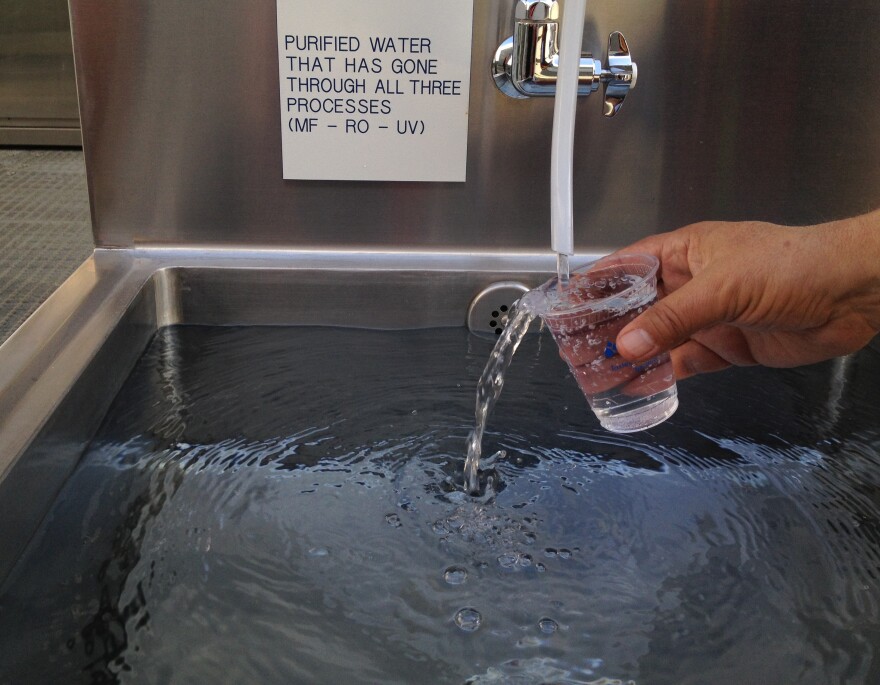With our free press under threat and federal funding for public media gone, your support matters more than ever. Help keep the LAist newsroom strong, become a monthly member or increase your support today.
California considers new rules to allow direct consumption of treated sewer water

California is considering becoming the first state in the country to allow people to drink recycled sewer water. For years, the state has allowed this to go on indirectly, by permitting water utilities to put treated wastewater into reservoirs and groundwater, where it is diluted with other water sources. Now, the goal is to skip that step and and put the treated effluent straight into drinking water.
A new report released by the State Water Resources Control Board last week outlines what needs to happen before drinking treated wastewater, also known as "direct potable reuse," becomes a reality. Here are some key takeaways from that report.
Why is this happening now?
California is growing – the population is expected to reach 50 million by 2050. At the same time, the state is staring down a future that will be hotter and drier. As a result, state officials are hoping to boost the use of recycled water – including sewage.
In 2010, the state legislature asked the California Department of Public Health to look into the feasibility of recycling sewage for drinking water and report back by the end of 2016. The report released last week is part of that process.
What did the report find?
It found that putting recycled sewer water directly into drinking water is technically possible, but there are a lot of unanswered questions: like how to identify unknown contaminants in the sewage, how to monitor for pathogens in wastewater and how to define "rigorous testing," "diverse sources," and other subjective terms so that future regulations are clear and enforceable.
How soon will it be before we’re drinking treated sewer water?
There's no timeline for developing the regulations. And there would need to be regulations in place before anyone is putting treated sewer water directly into drinking water.
But in Southern California, many of us already are drinking treated wastewater -- at least, indirectly. Places like Orange County, the Chino Basin and coastal Los Angeles have been blending treated wastewater with groundwater for years. But the difference is, the treated sewer water has been sitting in a reservoir or underground aquifer before it gets delivered to our tap. That means the water is diluted, and it also gives water managers time to wait for lab results from the wastewater treatment plant, and make last minute changes if something goes awry.
It will be quite a while before there is a pipeline directly from the wastewater treatment plant to the drinking water treatment plant, said Randy Barnard, chief of the recycled water unit with the State Water Resources Conservation Board.
What are the concerns about drinking treated sewer water?
Sewage is not an ideal source of water. “It has to be closely analyzed and monitored. It has a potential to carry a lot of things that are adverse to public health,” like viruses, medications and chemicals, according to Barnard.
That kind of monitoring is expensive. Barnard said treating sewage costs more than importing water from Northern California, and as a result, water agencies will only turn to direct recycling of sewage when they’ve exhausted all their other options. Only desalination costs more.
Still, many water agencies in Southern California have expressed interest in recycling treated wastewater, and say their customers are less opposed to it than in the past.







